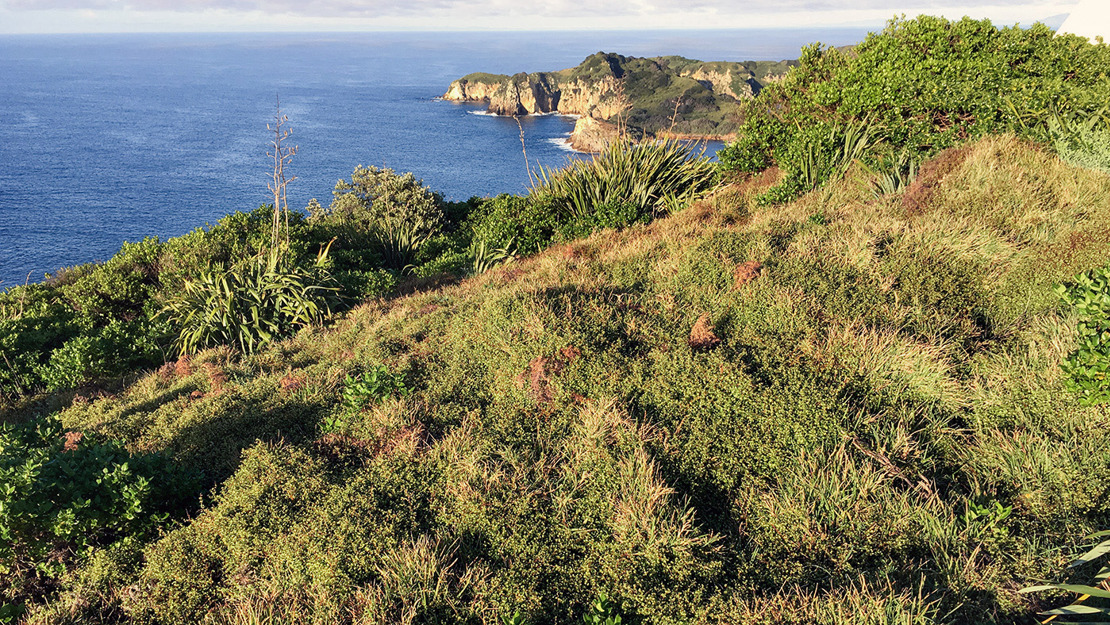Iceplant, glasswort herbfield or loamfield ecosystem (SA7)
Coastal saline ecosystem
About this ecosystem
Petrel scrub is located on the coast in warm to mild areas. Soils are very fertile because of all the nutrients seabirds bring ashore and deposit as guano. This physical disturbance alters vegetation succession and increases ecosystem productivity.
A good example of this ecosystem in Auckland occurs on the Mokohīnau Islands.

Flora and fauna in this ecosystem
A mosaic of herbfield species and scattered scrub-vineland occurs. Species include:
- glasswort
- iceplant
- scurvy grass
- sea primrose
- harakeke
- small-leaved pōhuehue.
These plant communities are interspersed with bare ground, bird burrows and guano deposits.
A wide range of seabirds are present including:
- diving and white-faced storm petrels
- shearwaters
- gannets
- black-backed and red-billed gulls
- white-fronted tern.
Tuatara, geckos and skinks also occur.
Threats to this ecosystem
This ecosystem is critically endangered.
The most significant threat to this ecosystem is from introduced predators, such as rats. In many places, rats have eliminated seabird populations. This has caused the local extinction of petrel scrub from the mainland and a number of offshore islands.
Other threats include:
- declining seabird populations through fisheries by-catch
- weed invasion of herbaceous nitrogen loving weed species.



